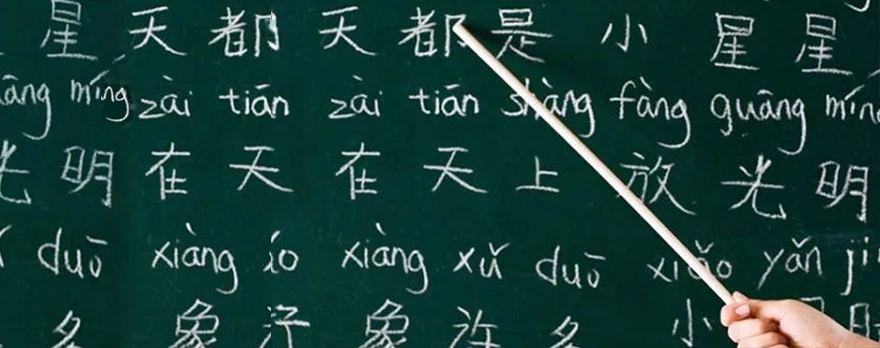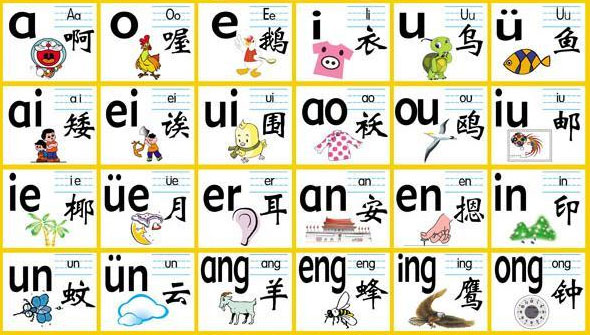What is Pinyin? Pinyin is a phonetic sound system that utilizes Roman letters to transcribe the sounds of Chinese characters. Learning to read Chinese can be quite difficult for English-speaking people because its writing system is very different.
Unlike English or other Romance languages, where letters represent sounds, Chinese characters are pictographic symbols that convey meaning rather than phonetic information.
This fundamental difference often poses challenges for learners. However, a phonetic system called Pinyin acts as a bridge, helping learners associate Chinese characters with their corresponding sounds.
In this article, we will learn what is Pinyin, how it works, and how it can help read Chinese language.
Key Points Covered in The Article
- Pinyin is a phonetic sound system that helps English speakers learn to read Chinese.
- Chinese characters are different from letters in English and pose challenges for learners.
- Pinyin acts as a bridge by associating Chinese characters with their sounds.
- Pinyin was developed and standardized by the Chinese government in the 1950s.
- Zhou Youguang and linguists played a significant role in the development of Pinyin.
- Pinyin improved literacy rates and standardized Chinese character pronunciation.
- Pinyin gained international recognition and endorsement from ISO and the United Nations in the 1980s.
- Pinyin is the standard Romanization system for Chinese characters globally.
- Pinyin simplifies typing Chinese characters on keyboards and improves pronunciation.
- Understanding Chinese numbers is essential for language learners.
- Pinyin benefits children’s language learning, improving pronunciation and vocabulary acquisition.
- Engaging multiple senses and incorporating interactive methods are effective for teaching Pinyin to children.
ALSO READ: How Do Chinese Keyboard Work?
What is Pinyin?
Pinyin is a phonetic sound system that utilizes Roman letters to transcribe the sounds of Chinese characters. The term “Pinyin” translates to “Spell Sound” literally.
Although Pinyin has a history dating back to the 1600s, it was during the 1950s that the Chinese government took significant steps in developing and publishing the modern standard known as Hanyu Pinyin. This standardization process played a crucial role in establishing a consistent phonetic system for Chinese characters.
History of Pinyin

The origins of Pinyin can be traced back to the necessity of explaining the Chinese language to Western learners.
However, during the Qing Dynasty, the idea of incorporating a spelling system into the Chinese writing system began to gain acceptance among Chinese individuals.
It was not until the 1950s that the Chinese government officially acknowledged and accepted Pinyin as a standardized form of language.
Prior to that, Pinyin had not received official recognition and was not widely adopted as a regulated system for phonetic representation in Chinese writing.
The government’s endorsement of Pinyin during the 1950s marked a significant milestone in its journey towards becoming a recognized and widely used tool for learning and reading Chinese.
This recognition came about through the efforts of Zhou Youguang and a group of linguists who spearheaded the development of Pinyin.
The introduction of Pinyin in schools served multiple purposes, including improving literacy rates and establishing a consistent pronunciation system for Chinese characters.
The Significance of Pinyin
During the 1980s, Pinyin received widespread recognition and became highly acclaimed. This was largely due to its official endorsement by respected international organizations such as the International Organization for Standardization (ISO) and the United Nations.
This recognition from influential entities solidified Pinyin’s reputation as a widely accepted system for representing Chinese characters using the Roman alphabet.
It marked a significant moment that elevated the importance and usage of Pinyin on a global level.
This recognition on a global scale solidified Pinyin’s position as the standard romanization system for Chinese characters worldwide.
The endorsement by these influential institutions played a crucial role in establishing Pinyin’s credibility and facilitating its adoption and implementation across various linguistic and cultural contexts.
This widespread adoption solidified Pinyin as the standard romanization system for Chinese characters worldwide.
Before Pinyin was introduced, approximately 85% of the Chinese population was illiterate.
The implementation of Pinyin not only improved literacy rates but also made learning Chinese more accessible to non-native speakers.
How Does Pinyin Work?
Pinyin utilizes familiar Roman letters to transcribe the sounds of Chinese. In Mandarin Chinese, each character corresponds to one syllable, which can be a standalone word or part of a word.
In Chinese, a syllable is made up of three key components: an initial sound, a final sound, and a tone.
While it may initially seem complex, a good way to understand it is by comparing it to the English word “cat,” which has three distinct sounds within a single syllable.
This similarity helps to illustrate that despite the differences in writing systems and pronunciation, the concept of syllables exists in both Chinese and English.
It serves as a fundamental building block in understanding the structure and pronunciation of words in the Chinese language.
Mandarin Chinese comprises 21 initial sounds and 35 final sounds, resulting in a total of 56 basic sounds. In comparison, English has 44 basic sounds.
The combination of initial and final sounds creates 411 possible combinations. When the four tones of Mandarin Chinese are applied to these combinations, it results in approximately 1,600 unique syllables.
The Role of Tones in Chinese
Tones play a crucial role in Mandarin Chinese as they differentiate words that would otherwise be homonyms. Mandarin Chinese is a tonal language with four tones, or five if the neutral tone is included.
The same syllable pronounced with different tones can have completely different meanings. In Pinyin, tones are indicated using accent marks. The four tones are as follows:
- High-level tone (ā): Resembles the sustained tone of your voice while singing “aaaaah.”
- Rising tone (á): Resembles the rising tone of your voice when asking a question, like “Huh?”
- Falling rising tone (ǎ): Resembles the falling and then the rising tone of your voice when saying “meow.”
- Falling tone (à): Resembles the falling tone of your voice when giving a command, like “Stop!”
The Importance of Learning Pinyin

Pinyin holds significant importance for both native Chinese speakers and non-native learners, especially in the digital age.
It provides a practical method for typing Chinese characters on standard keyboards, making it the preferred method for texting and digital communication in Chinese.
Pinyin offers a more efficient and convenient alternative than writing characters on touchpads, which can be time-consuming and error-prone.
Furthermore, Pinyin serves as a valuable tool for reinforcing correct pronunciation.
By learning Pinyin alongside Chinese characters, learners can better understand the pronunciation of new words and improve their overall spoken language skills.
Pinyin helps bridge the gap between the written and spoken aspects of the Chinese language, making it an essential component of language learning.
The historical journey of Pinyin is also noteworthy. Initially introduced to explain Chinese to Western learners, it gained official recognition from the Chinese government in the 1950s.
This recognition led to its implementation in schools intending to improve literacy rates and standardize Chinese character pronunciation.
Pinyin’s system of initials, finals, and tone indicators simplifies the learning process, helping learners understand the complexities of Mandarin Chinese more effectively.
In addition to Pinyin, a basic understanding of Chinese numbers benefits language learners. Chinese numerals employ different systems, including the familiar Arabic and indigenous systems.
Familiarizing oneself with the numbers from 1 to 20 lays a foundation for further language acquisition and enhances confidence in using Mandarin Chinese.
How Pinyin is Beneficial for Children?

Pinyin offers numerous advantages for children in language learning:
- Improves pronunciation and tones
- Engages multiple senses through interactive teaching methods
- Aligns with the phonics approach, making it easier for young learners
- Assists in vocabulary acquisition through visual aids
- Compatible with digital devices for convenient practice
When teaching Pinyin to children, diverse learning techniques are essential:
- Engage all five senses through hands-on activities, songs, and playful interactions
- Incorporate storybooks with Pinyin to associate sounds with words and meanings
Note: Pinyin is a phonetic sound system that connects Chinese characters with their corresponding sounds, making the language more accessible to learners, enhancing pronunciation, facilitating digital communication, and enabling a rewarding language acquisition journey.
What Are The Chinese Numbers (1-20)
When embarking on the journey of learning a new language, it’s essential to cover all the essential building blocks.
And one crucial aspect of language learning is acquiring a good understanding of numerals in the target language. This not only helps to boost your confidence but also strengthens your overall language skills.
In the context of China, there are three numeral systems in use. The first one is the widely known Arabic system you’re likely familiar with (1, 2, 3, and so on).
Additionally, there is an indigenous numerical system that Chinese speakers commonly use. To assist you in getting started, here is a list of Chinese numbers from 1 to 20:
- 0 = Líng
- 1 = Yī
- 2 = Èr
- 3 = Sān
- 4 = Sì
- 5 = Wǔ
- 6 = Liù
- 7 = Qī
- 8 = Bā
- 9 = Jiǔ
- 10 = Shí
- 11 = Shí yī
- 12 = Shí èr
- 13 = Shí sān
- 14 = Shí sì
- 15 = Shí wǔ
- 16 = Shí liù
- 17 = Shí qī
- 18 = Shí bā
- 19 = Shí jiǔ
- 20 = Èr shí
Familiarizing yourself with these Chinese numbers will lay a solid foundation for further language acquisition and develop confidence in effectively using Mandarin Chinese.
Conclusion
In conclusion, Pinyin plays a crucial role in learning to read Chinese. It is a phonetic sound system that connects Chinese characters with their corresponding sounds, making the language more accessible to learners. Understanding Pinyin’s structure, tones, and historical significance empowers learners to navigate the complexities of Mandarin Chinese more effectively. By embracing Pinyin alongside Chinese characters, learners can enhance their pronunciation, facilitate digital communication, and embark on a rewarding language acquisition journey.




